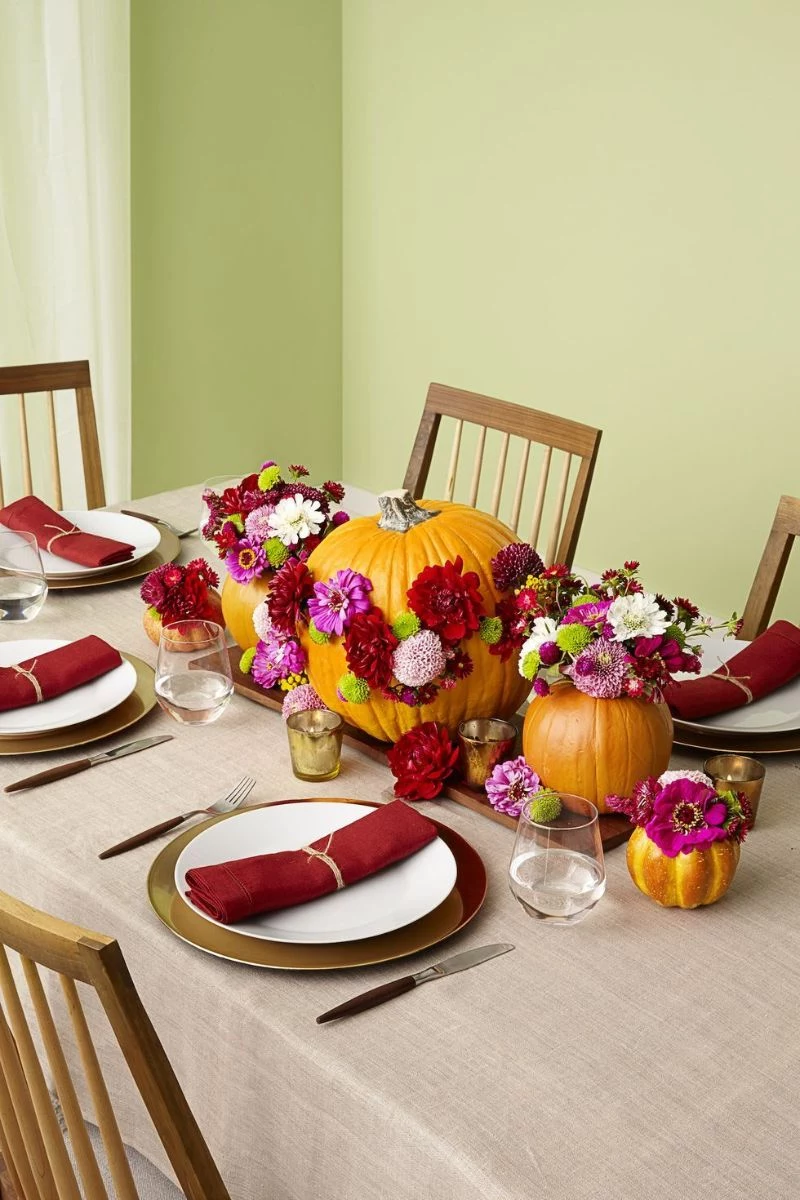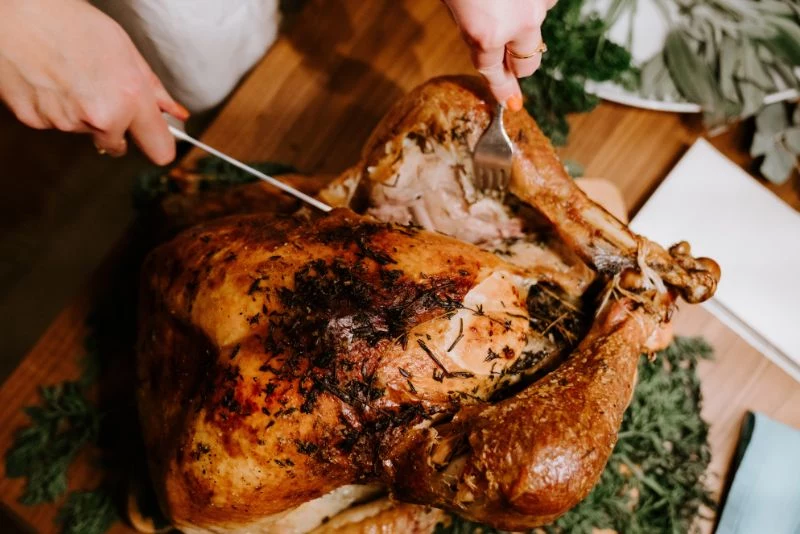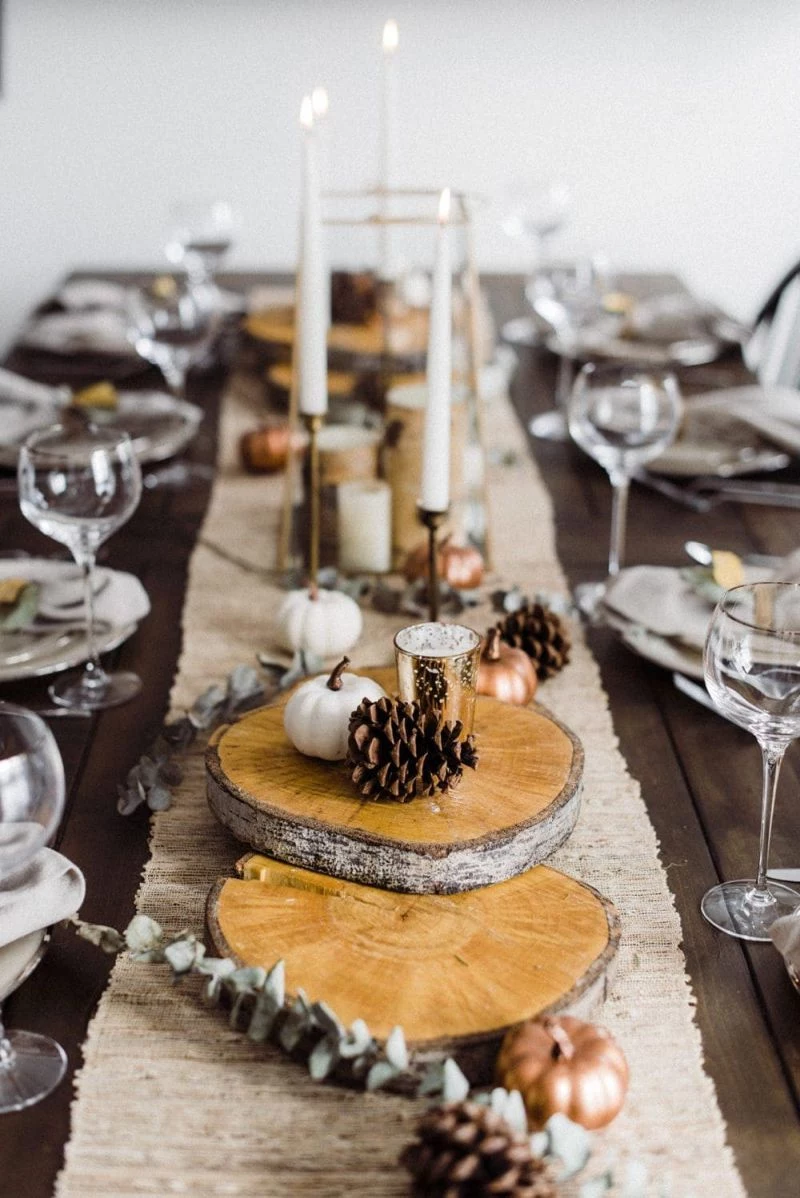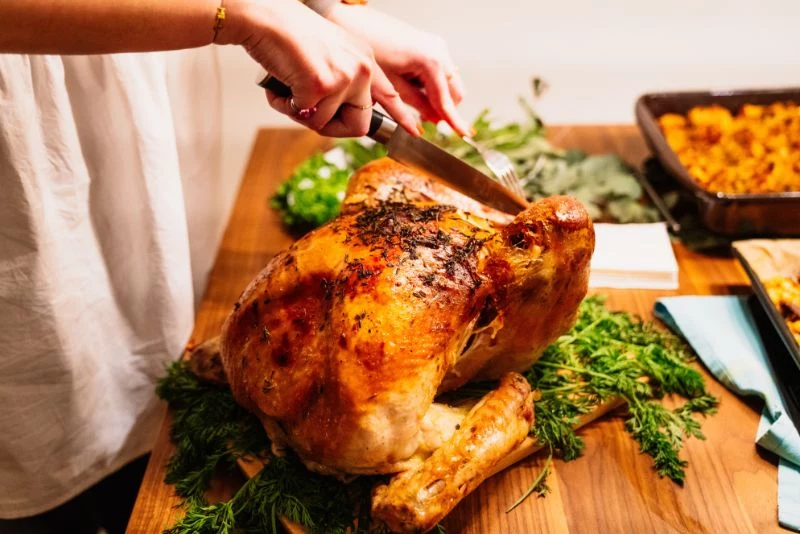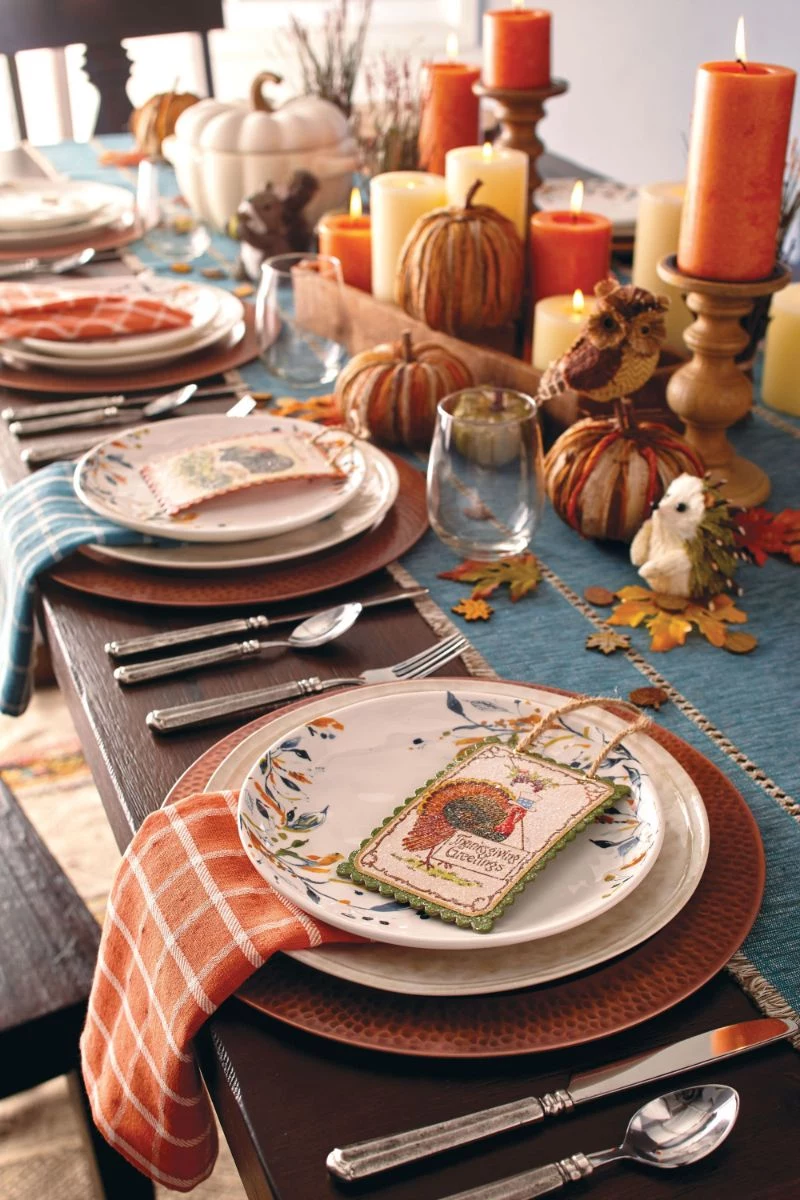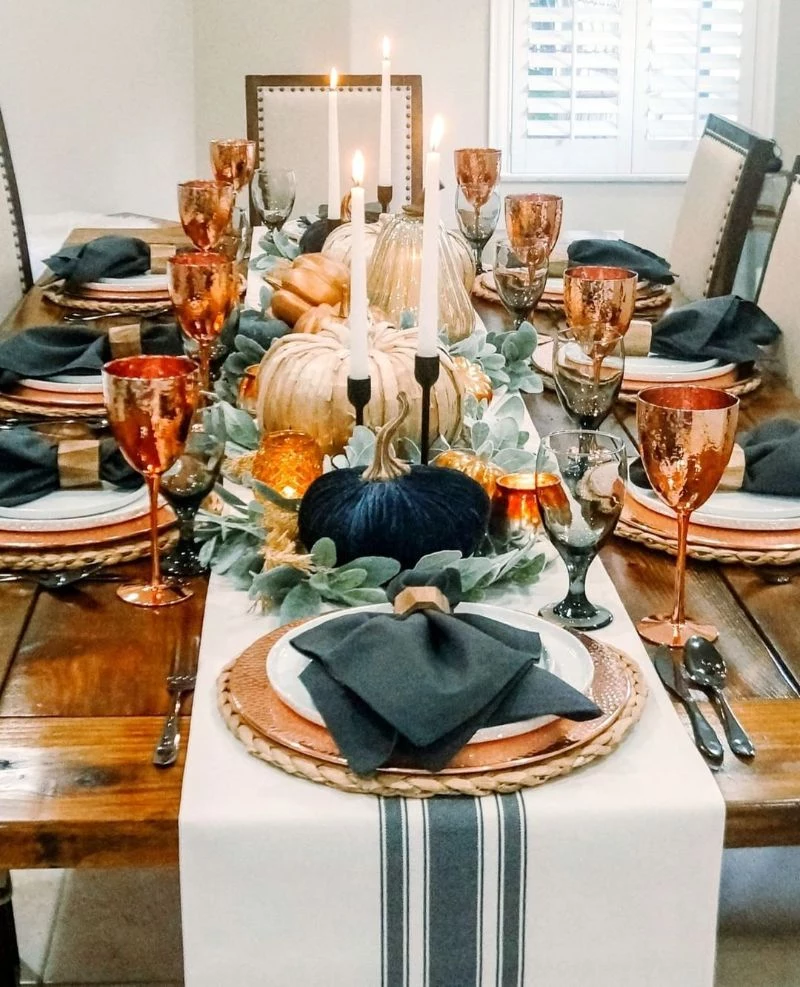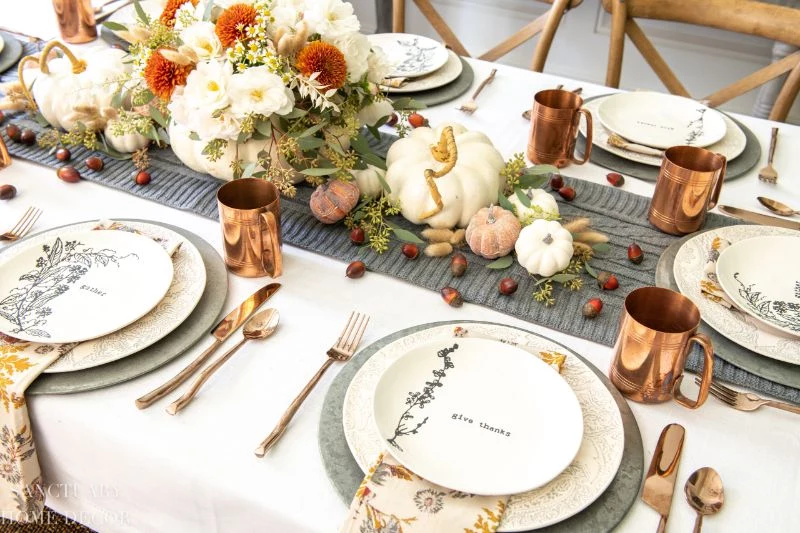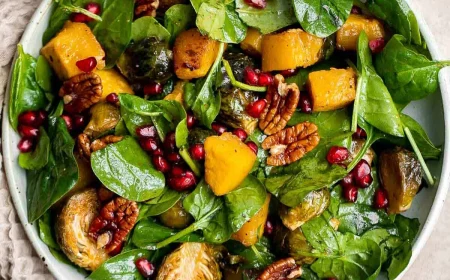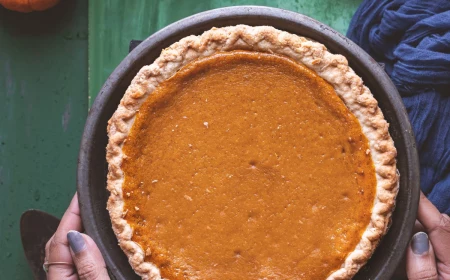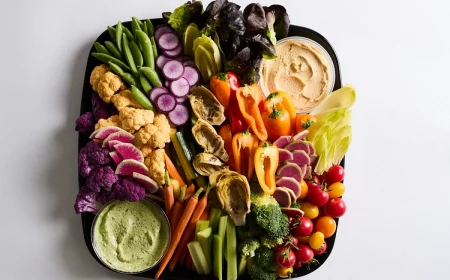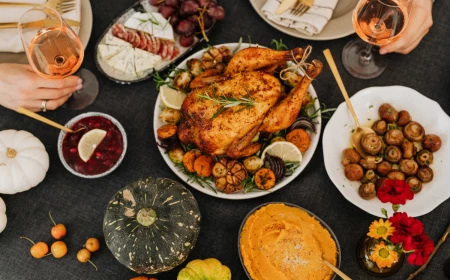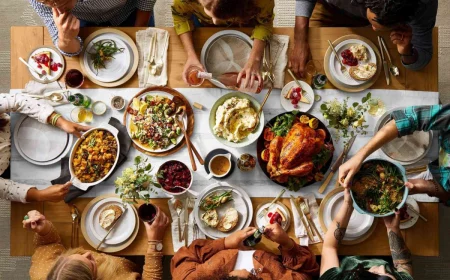The No-Panic Thanksgiving Guide: How to Actually Enjoy the Day
I’ve been cooking for big crowds for more than two decades, both in restaurant kitchens and for my own crazy family. And let me tell you, Thanksgiving dinner is a whole different beast. It’s not one big dish; it’s a full-on symphony of dishes that all need to hit the table, hot and ready, at the exact same time. It’s a culinary puzzle.
In this article
- First Things First: Let’s Talk Turkey (Before You Cook It)
- The Main Event: Roasting a Turkey That’s Actually Juicy
- The Unsung Hero: Real-Deal Pan Gravy
- Mastering the Classic Sides
- The Grand Finale: Classic Pumpkin Pie
- The Master Plan: Your Timeline for a Stress-Free Day
- One Last Thing: Carving the Bird
- Inspirational Gallery
My first few attempts were, honestly, a hot mess. I vividly remember one year where the turkey came out as dry as a bone, the gravy was a lumpy disgrace, and the potatoes were stone-cold. It was pure chaos. But through all that stress, a system started to form—a real battle plan for making sure everything comes together without a single tear.
So, this isn’t just another recipe dump. Think of it as a complete game plan. We’re going to walk through the main events one by one, focusing on the little techniques and bits of science that separate a good meal from a great one. The goal here is for you to feel cool, calm, and in control, so you can actually hang out with your family instead of being chained to the stove.
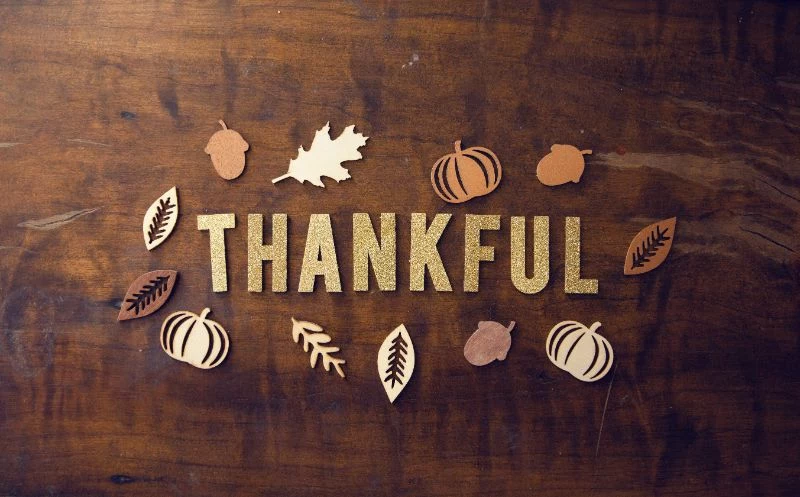
First Things First: Let’s Talk Turkey (Before You Cook It)
Before we even get to roasting, let’s tackle the two biggest pre-game questions that cause the most panic: how much to buy and how to thaw the darn thing.
As a general rule, you’ll want to plan for about 1.5 pounds of turkey per person. This sounds like a lot, but remember you’re accounting for the bone weight. A 12 to 15-pound bird is usually perfect for a group of 8-10 people, and it leaves you with a good amount for those glorious next-day sandwiches.
Now, for the thaw. This is CRITICAL. A partially frozen turkey is a food safety nightmare because it cooks unevenly. The safest way is in the refrigerator. Just place the frozen bird, still in its wrapper, on a baking sheet to catch any drips and stick it in the fridge. Heads up, this takes time! Plan on at least 24 hours of thawing for every 4-5 pounds. So for a 15-pound turkey, you need to move it from the freezer to the fridge on Sunday night or Monday morning at the absolute latest.
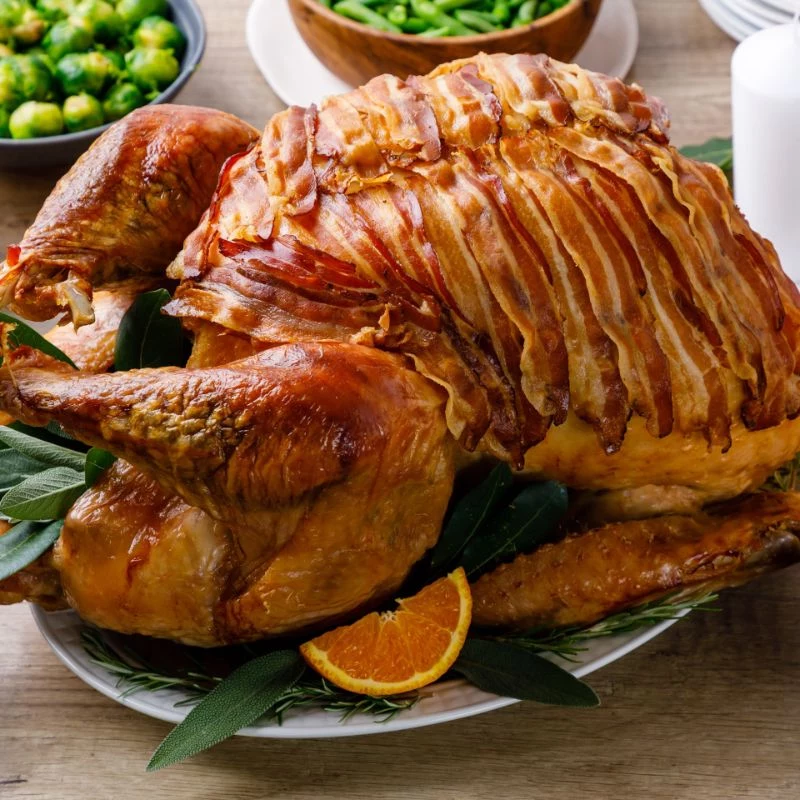
The Main Event: Roasting a Turkey That’s Actually Juicy
The turkey is the star, no doubt. But it’s also the source of so much anxiety. The number one fear? Serving a dry bird. I’ve been there, and it’s no fun. But the secret to a juicy, flavorful turkey isn’t some complicated chef’s trick. It really just comes down to two simple things: seasoning it ahead of time and using a thermometer.
Why I Swear by a Dry Brine
Forget the giant buckets of saltwater. A wet brine works, sure, but it’s messy, a pain to deal with, and takes up your entire fridge. For years, I’ve been a firm believer in the dry brine. It’s way easier and, in my opinion, gives you a much better result with fantastically crispy skin.
So what’s happening? When you rub the turkey with salt, osmosis pulls moisture out of the skin. That moisture mixes with the salt, creating a super-concentrated brine that then gets reabsorbed into the meat. The salt works its magic on the proteins, helping them hold onto more moisture during cooking. The result is deeply seasoned, juicy meat. As a bonus, the whole process dries out the skin itself, which is the key to getting that perfect, crackly finish in the oven.
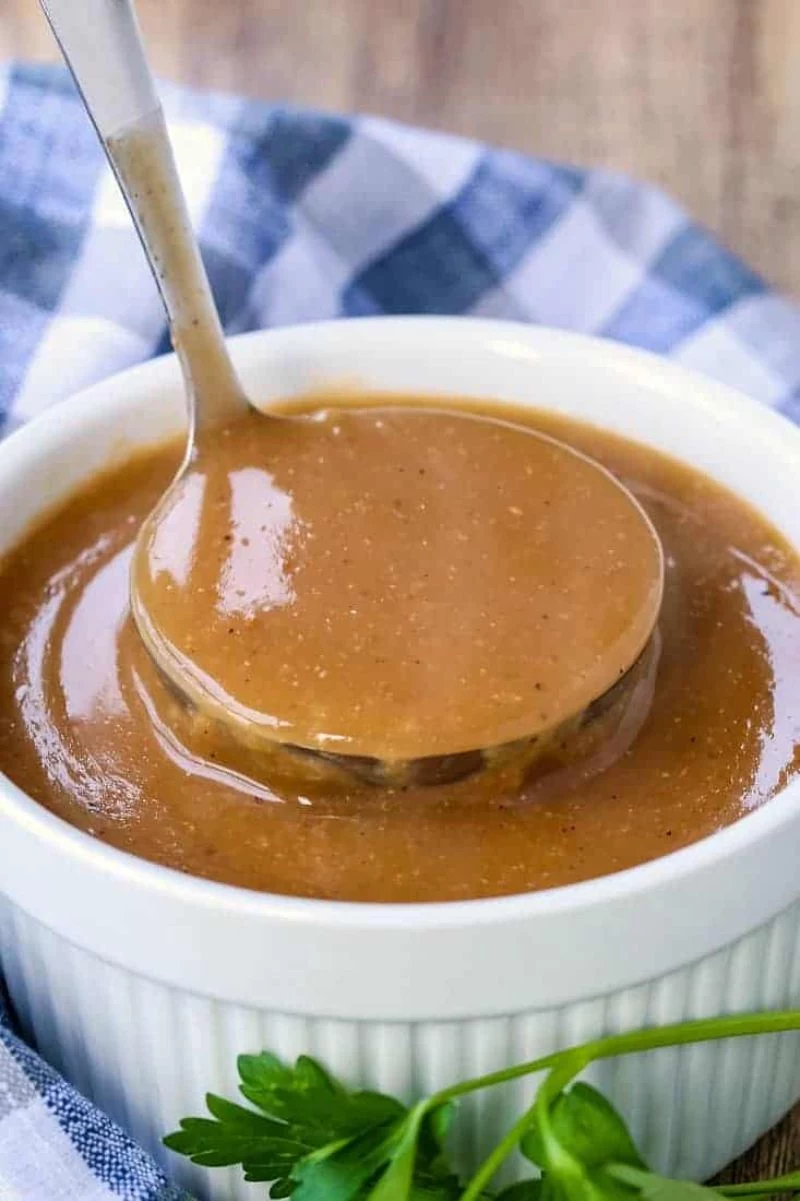
My Fail-Proof Dry Brine & Roasting Method
You’ll want to get this party started on the Tuesday or Wednesday before the big day. It’s mostly hands-off time, so don’t sweat it.
Here’s what you’ll need:
- 1 whole turkey (12-15 pounds), completely thawed
- 1/2 cup kosher salt (Don’t use table salt, it’s too fine and will make the bird too salty)
- 2 tablespoons coarse black pepper
- 1 tablespoon each of dried sage and dried thyme
- 1 large onion, 2 carrots, and 2 celery stalks, all roughly chopped
- 4 tablespoons of unsalted butter, melted
Here’s the game plan:
- Mix the Brine: Just stir the salt, pepper, sage, and thyme together in a small bowl. Easy.
- Prep the Bird: Make sure that turkey is 100% thawed. Pull out the neck and giblets from the cavity—don’t throw them out, we’ll use them for the gravy later! Pat the turkey completely dry with paper towels, inside and out. This step is non-negotiable for crispy skin. Now, carefully work your fingers between the skin and the breast meat to create a pocket. Rub about two-thirds of your salt mix directly on the meat under the skin. Get the rest of it all over the outside of the skin and inside the cavity.
- Let It Chill: Place the turkey on a wire rack set inside a baking sheet. The rack lets air circulate underneath. Pop it in the fridge, uncovered, for 1 to 3 days. The skin will start to look a bit dry and leathery. That’s a good thing!
- Roasting Time: On Thanksgiving morning, preheat your oven to 425°F. Don’t rinse the turkey! The salt has already done its job. Scatter your chopped onion, carrots, and celery on the bottom of a sturdy roasting pan. Quick Tip: Don’t have a roasting rack? No problem. You can just rest the turkey directly on top of these veggies, or even make a coil out of aluminum foil to lift it up. Place the turkey on top and brush it all over with the melted butter.
- The Temp is Everything: Put the turkey in the oven and immediately drop the heat to 350°F. A good estimate is 12-15 minutes per pound, but honestly, time is irrelevant. The only thing that matters is the internal temperature. This is where a good digital instant-read thermometer is your best friend. Seriously, don’t try to guess. You can get a reliable one for $20-$40 online or at any kitchen store, and it’s the best investment you can make for your cooking. Start checking at the two-thirds mark. Stick the thermometer into the thickest part of the thigh, avoiding the bone. You’re looking for 165°F. Pulling it out any later almost guarantees dry breast meat.
- The All-Important Rest: This might be the most crucial step of all. Once it hits 165°F, take it out of the oven, move it to a cutting board, and tent it loosely with foil. Let it rest for a minimum of 30 minutes. During cooking, all the juices get pushed to the center. Resting lets them redistribute back through the meat. If you slice it open right away, all that flavor will just spill out onto your board.
Oh yeah, a quick word on safety: Be smart with raw poultry. Use a dedicated cutting board and wash your hands, tools, and counters with hot, soapy water when you’re done.
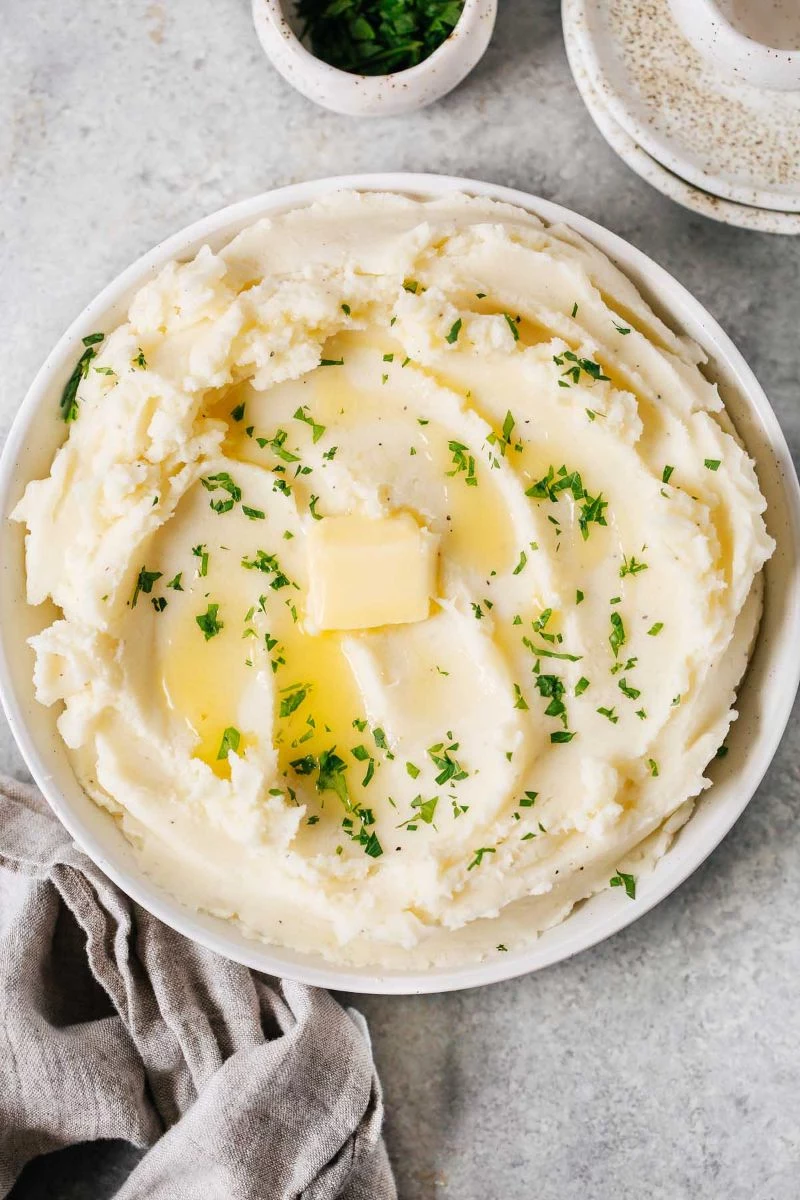
The Unsung Hero: Real-Deal Pan Gravy
Let’s be real, gravy from a jar or packet just doesn’t cut it. The real magic comes from those browned, crusty bits left in the bottom of the roasting pan. That’s pure flavor, and making gravy from scratch is a skill that will elevate your entire meal.
How to Build Amazing Gravy
The secret to smooth, rich gravy is a roux—a simple paste of fat and flour that acts as a thickener.
What you’ll need:
- The pan drippings from your turkey
- 4 tablespoons all-purpose flour
- 4 cups turkey or chicken stock (low-sodium is best), warmed up
- Salt and pepper
- Optional: A splash of white wine or sherry for extra depth
Here’s how to do it:
- Get the Gold: After you move the turkey to rest, pour all the drippings from the pan into a fat separator or a simple glass measuring cup. Let it sit for a few minutes so the fat can rise to the top.
- Pro Tip for More Flavor: Remember those giblets and neck from the turkey? While the turkey is roasting, simmer them in the chicken stock you plan to use for the gravy for about an hour. This creates a super-rich, homemade turkey stock that adds a massive flavor boost. Just strain out the solids before you use the stock.
- Deglaze the Pan: Spoon about 4 tablespoons of that separated turkey fat back into the roasting pan. Set the pan over two burners on your stovetop on medium heat. (Heads up! If your roasting pan isn’t stovetop-safe, just use a sturdy spatula to scrape all those browned bits and the fat into a regular saucepan). Now, add a splash of wine to deglaze, scraping up all those stuck-on bits (the technical term is ‘fond’) with a wooden spoon.
- Make the Roux: Sprinkle the flour over the fat and whisk constantly for a couple of minutes until it forms a smooth paste. You’re just cooking out that raw flour taste.
- Build the Gravy: Slowly—and I mean slowly—pour in about a cup of your warmed, flavor-boosted stock while whisking like crazy. It’ll get thick and clumpy. Don’t panic! That’s supposed to happen. Keep whisking and gradually add the rest of the stock until it’s smooth. Finally, pour in the juices from the bottom of your fat separator (the brown stuff, not the fat).
- Simmer and Season: Let the gravy simmer for 5-10 minutes to thicken up. Now, give it a taste. It will definitely need salt and probably some pepper.
Quick Gravy Troubleshooting:
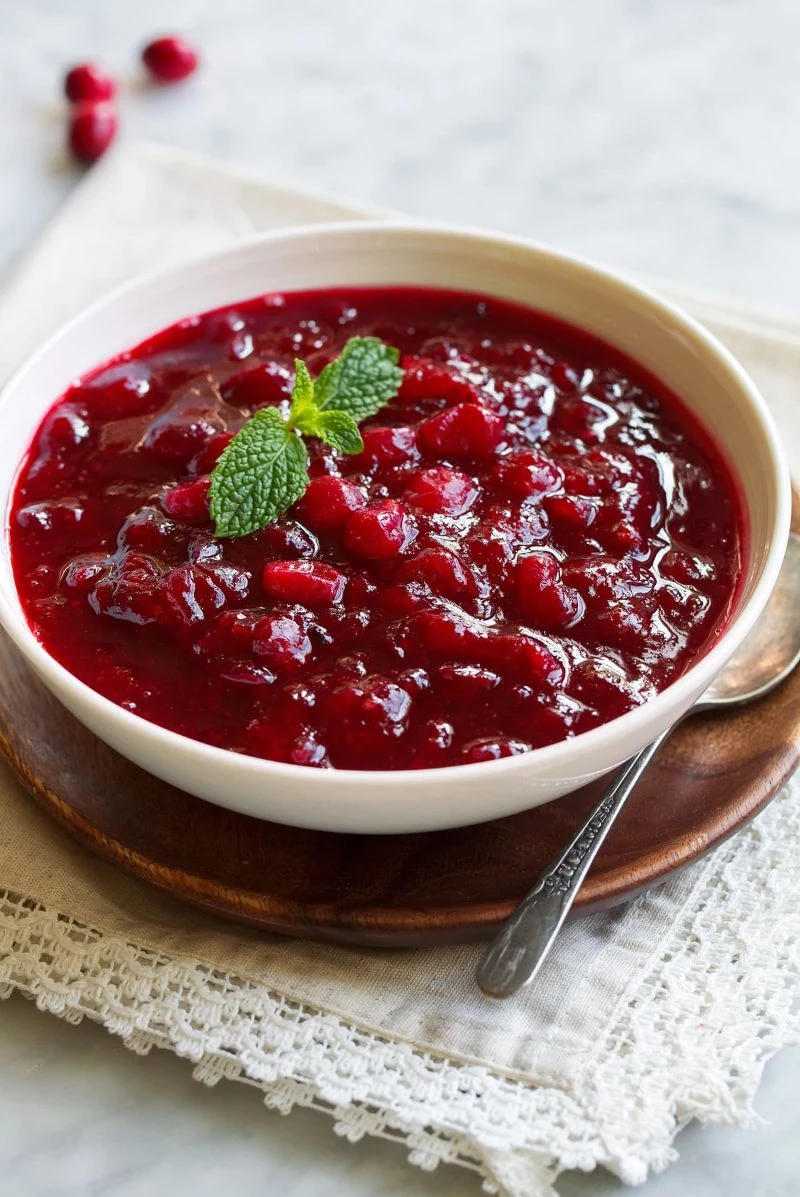
- Lumpy? You added the liquid too fast. Just pour it through a fine-mesh strainer. No one will ever know.
- Too thin? Let it simmer a bit longer to reduce.
- Too thick? Whisk in a little more warm stock.
- In a pinch? It’s okay to cheat! If you’re short on drippings or time, you can elevate a jar of store-bought gravy. Just heat it in a saucepan with a splash of sherry, a sprig of fresh thyme, and any pan drippings you do have. It’s a huge improvement.
Mastering the Classic Sides
The sides are just as important as the turkey! The trick is to create a balance of textures and flavors—something creamy, something savory, and something bright and tangy.
Fluffy, Dreamy Mashed Potatoes
The difference between okay mashed potatoes and incredible ones is all about texture. We’re aiming for fluffy and creamy, not gluey. It all starts with the right potato.

Basically, potatoes have different starch levels. Here’s the breakdown:
- Russets: High in starch with a dry, floury texture. They fall apart easily and soak up butter like a dream. These are the gold standard for mashing.
- Yukon Golds: Medium starch with a naturally buttery flavor and creamy texture. A fantastic choice for mashing if you like them a bit denser.
- Red Potatoes: Low in starch and waxy. They hold their shape, which makes them terrible for mashing (hello, glue!) but great for roasting or potato salad.
For perfect potatoes, try this: Use about 4 pounds of Russets, peeled and chopped. Start them in a big pot of cold, salted water—this helps them cook evenly. Once they’re fork-tender, drain them well and put them back in the hot pot over low heat for a minute to steam off any extra water. This is a game-changer for avoiding soggy potatoes. Mash them with a potato ricer (for the ultimate fluff) or a simple hand masher before adding your liquids. Then, gently fold in warm milk and melted butter. Adding cold dairy to hot potatoes is a one-way ticket to a gummy texture.
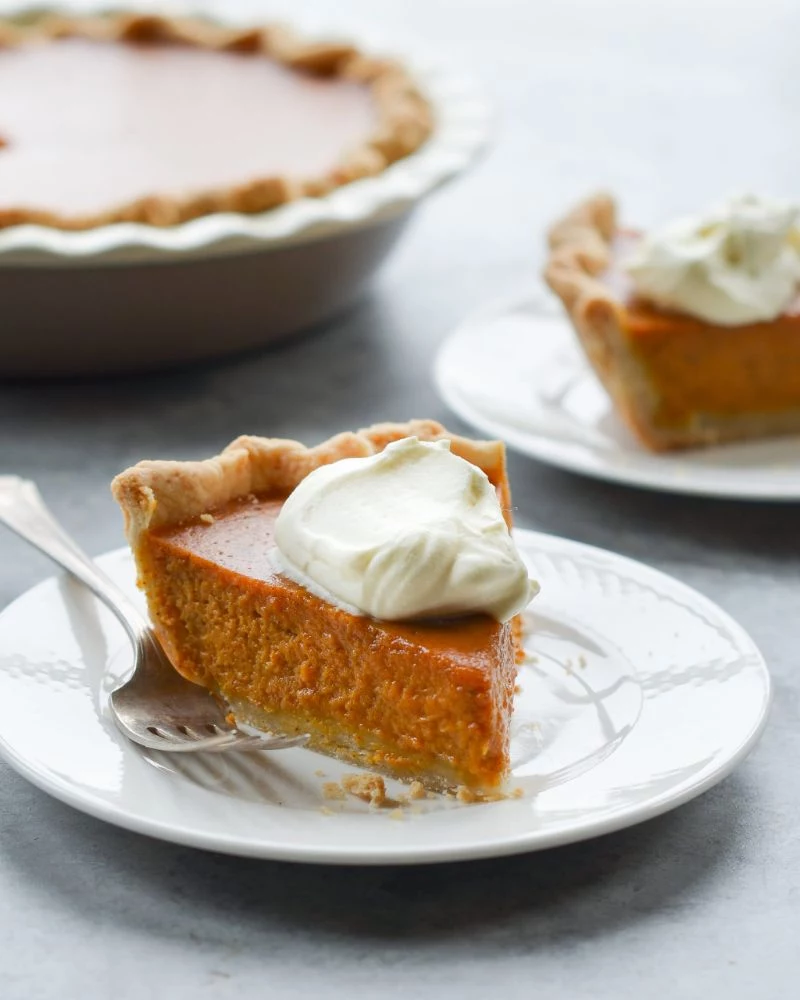
Make-Ahead Pro Tip: Yes, you can absolutely make your mashed potatoes the day before! Store them in an airtight container in the fridge. To reheat, you can either put them in a pot on the stove with a splash of milk or cream, or even better, put them in a slow cooker on low for a couple of hours before dinner. They’ll be perfectly warm and creamy.
Savory Bread Stuffing (or Dressing)
For food safety and better texture, I always cook my stuffing in a separate baking dish (which technically makes it ‘dressing’). This ensures it gets cooked to a safe temperature and gives you a wonderful contrast of a soft, moist inside and a crispy, golden-brown top.
The secret? Use good, sturdy bread—like a baguette or country loaf—and make sure it’s very dry. Cut it into cubes and leave it out on a baking sheet overnight, or toast it in a low oven. Dry bread is like a sponge; it soaks up all the flavorful broth without turning into mush. Sauté your onions and celery in plenty of butter, add fresh herbs like sage and thyme, and then gently toss everything together with stock and eggs. Bake it in a buttered dish until it’s beautifully browned.
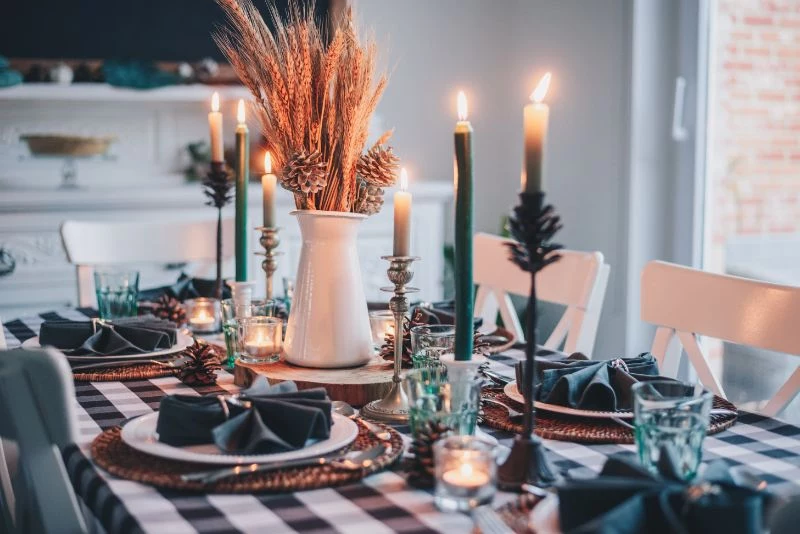
Can’t-Beat Homemade Cranberry Sauce
Honestly, this is so easy there’s no reason to buy the canned stuff. It gives you a burst of bright, tart flavor that cuts through all the richness of the meal. Just simmer a bag of fresh cranberries (usually around $2-$3 at the store in the fall) with a cup of sugar and a cup of water. For a little extra flair, add a strip of orange zest or a splash of orange juice. It takes about 10 minutes and will thicken as it cools. Best part? You can make this days in advance. It just gets better as it sits in the fridge.
The Grand Finale: Classic Pumpkin Pie
It’s not Thanksgiving without it. The two most common pie problems are a soggy bottom crust and a cracked filling. Good news: both are totally fixable.
To avoid a soggy bottom, you have to ‘blind bake’ the crust. This just means you partially bake the empty crust before adding the wet filling. Line your pie dough with parchment paper, fill it with pie weights or even just dried beans, and bake it for about 15 minutes. This creates a barrier against the wet filling.
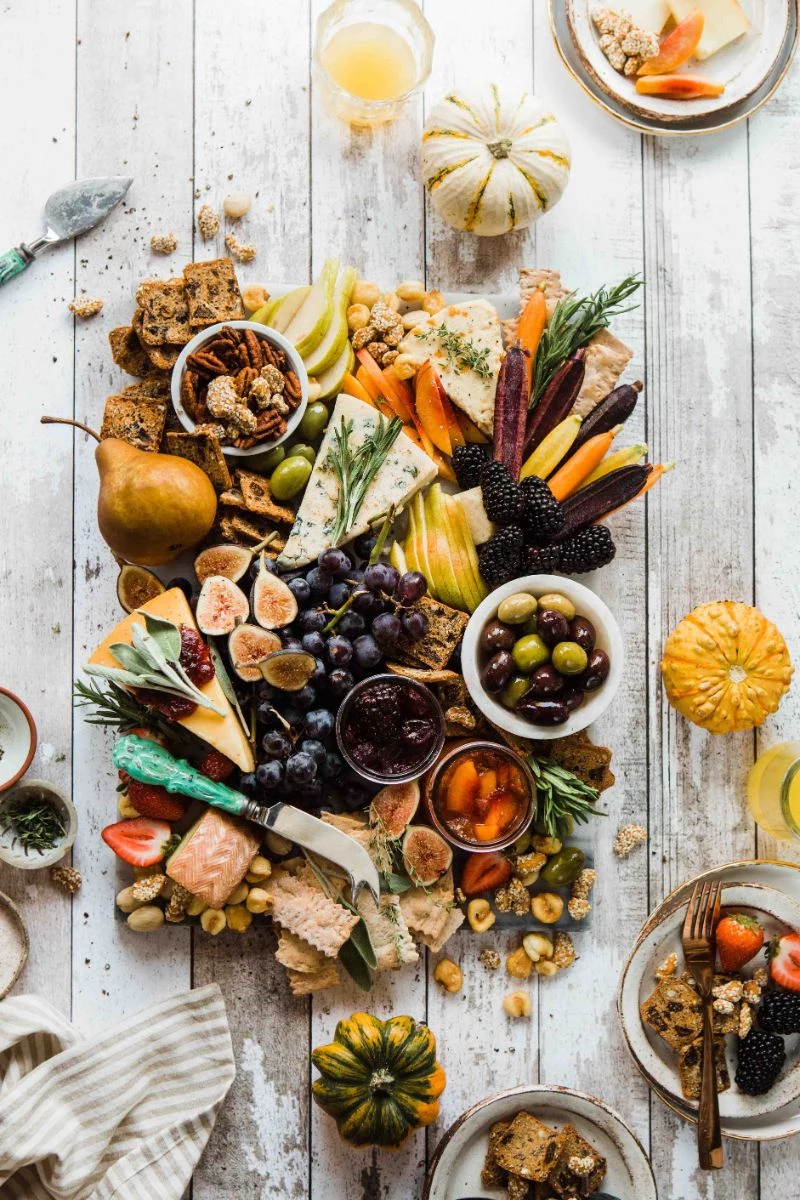
And by the way, it is 100% okay to use a store-bought frozen pie crust. No shame in that game! Just let it thaw, press it into your own pie plate if you want it to look homemade, and blind bake it just the same. It makes a world of difference.
Cracks in the filling are usually from overbaking. The filling is a custard, and when eggs get too hot, they curdle and crack. The trick is to pull the pie out of the oven when the edges are set but the center still has a slight jiggle to it. It will finish setting up as it cools on a wire rack. And if it does crack? Who cares! That’s what whipped cream is for.
The Master Plan: Your Timeline for a Stress-Free Day
Doing a little bit each day is the secret to not losing your mind. Spreading out the work makes the whole process feel manageable and, dare I say, enjoyable.
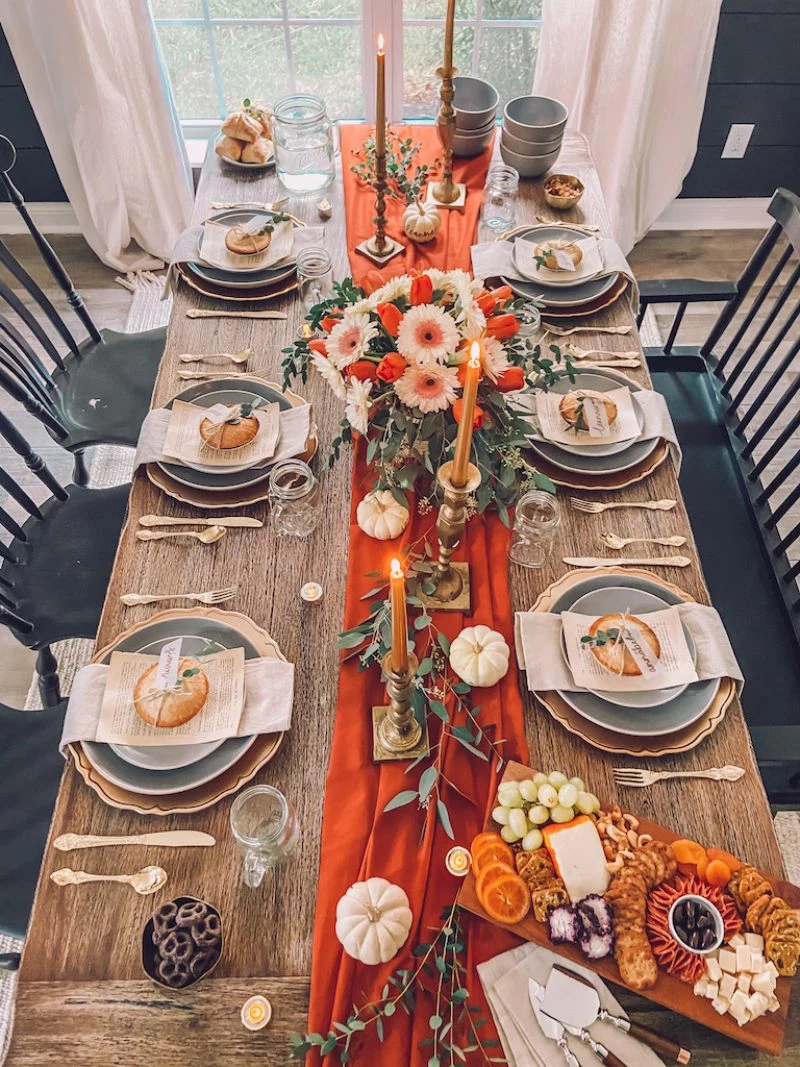
- Monday/Tuesday: Go grocery shopping. Make your cranberry sauce and stick it in the fridge.
- Wednesday: It’s prep day! Make the dry brine and get it on the turkey. Cube the bread for your dressing and let it dry out. You can also bake your pumpkin pie today—it’s great chilled. And hey, why not chop the onions and celery for the dressing and mash the potatoes? Store them in airtight containers in the fridge.
- Thanksgiving Day (Example for a 4 PM meal):
- 10 AM: Pull the turkey out of the fridge to take the chill off. Preheat your oven. Assemble your dressing in its baking dish.
- 11 AM: Turkey goes in the oven!
- 2 PM: Not much to do! Maybe set the table. Or have a glass of wine. You’ve earned it.
- 3 PM: Time for the sides. Put the dressing in the oven. Start reheating your mashed potatoes in the slow cooker or on the stove.
- 3:30 PM: The turkey should be hitting 165°F. Pull it out to rest.
- 3:45 PM: Make the gravy on the stovetop. The dressing should be golden brown and out of the oven. Gently warm the cranberry sauce if you like it warm.
- 4 PM: Time to eat!
One Last Thing: Carving the Bird
Okay, the masterpiece is cooked and rested. Now you have to carve it. This can be intimidating, but it’s simpler than it looks. The key is to separate the main parts first: remove the legs and thighs, then the wings, and then slice the breast meat off the bone. Honestly, the best way to learn is to see it done. Just search for a quick ‘how to carve a turkey’ video online—watching a 2-minute guide is more helpful than reading a thousand words.
And remember, the real goal here is to share a wonderful meal with people you love. So take a deep breath, accept offers of help, and don’t sweat the small stuff. You’ve got this.
Inspirational Gallery
Wondering what to serve besides wine?
While wine is a classic, not everyone partakes. Create a festive drink station that caters to all. A large pitcher of sparkling cider, like Martinelli’s, garnished with fresh cranberries and a sprig of rosemary is always a hit. For a warmer option, keep a slow cooker filled with spiced apple cider or a non-alcoholic mulled punch on a low setting. A few craft beers, like a light Pilsner or a malty Amber Ale, also complement the rich flavors of the meal perfectly.
An estimated 200 million pounds of turkey meat are thrown away each Thanksgiving in the U.S. alone.
That’s a staggering amount of waste. Plan for leftovers! Before dinner, set out take-home containers for your guests. Have a roll of masking tape and a marker ready so they can label their goodies. It makes cleanup easier and ensures your hard work is enjoyed for days to come, not tossed in the bin.
The secret to lump-free gravy: Don’t just sprinkle flour into the pan drippings. The key is to make a separate, smooth paste called a roux. In a small saucepan, melt a few tablespoons of butter, then whisk in an equal amount of all-purpose flour. Cook for a minute until it smells nutty. Now, slowly whisk your hot turkey drippings into this paste. The result? Silky, flawless gravy every time.
Create an atmosphere of cozy welcome before the first guest even arrives. You don’t need expensive scented candles. Just fill a small saucepan with water and toss in a few cinnamon sticks, some orange peels, and a handful of whole cloves. Let it simmer on the lowest heat on your stovetop. The gentle, natural aroma will fill your home with the unmistakable scent of the holidays, setting a relaxed and festive mood from the moment people walk in.
- Stays tender and flaky, never tough.
- Browns beautifully without burning.
- Doesn’t shrink into a sad puddle in the pan.
The trick to a perfect pie crust? Two things: temperature and fat. Use a mix of ice-cold butter for flavor and solid vegetable shortening (like Crisco) for flakiness. And for a pro-level secret championed by bakers at King Arthur Flour, replace half the ice water with high-proof, unflavored vodka. The alcohol evaporates faster than water in the oven, creating steam pockets that result in an incredibly delicate, tender crust.
Don’t let the side dishes add to the day-of-chaos. Many of the classics can be almost entirely prepped a day or two in advance, saving you precious time and stovetop space. Here are a few that work beautifully:
- Cranberry Sauce: It actually tastes better when the flavors have had a day to meld. Store it in an airtight container in the fridge.
- Mashed Potatoes: Prepare them completely, then store in a casserole dish. Reheat in the oven with a few extra pats of butter on top.
- Green Bean Casserole: Assemble the entire casserole—beans, soup mixture, everything—but leave off the crispy fried onions. Cover and refrigerate, then just bake and top with the onions before serving.
For a tablescape that looks elegant but is deceptively simple, focus on layers and natural textures. Start with a simple table runner in a warm color like burnt orange or deep red. Instead of a formal centerpiece, scatter a few small gourds, mini pumpkins, and eucalyptus sprigs down the center of the runner. It feels abundant and organic, and best of all, it’s low enough for guests to see each other across the table.
Russet Potatoes: Their high starch and low moisture content make them ideal for light, fluffy, and absorbent mashed potatoes. They break down easily, so be careful not to overwork them, or they can become gummy.
Yukon Gold Potatoes: Naturally buttery in flavor and color, these have a denser, creamier texture thanks to their medium starch content. They hold their shape better, making them a more forgiving choice for an exceptionally rich and smooth mash.
For a foolproof, crowd-pleasing mash, Yukon Golds are the winner.
According to a 2015 study in the journal *Flavour*, 75% of the emotions we generate on a daily basis are affected by smell.
This is why the aroma of Thanksgiving is just as important as the taste. The scent of a roasting turkey, cinnamon, and savory herbs doesn’t just make us hungry; it triggers powerful memories and feelings of comfort and nostalgia, weaving together the emotional fabric of the holiday.
